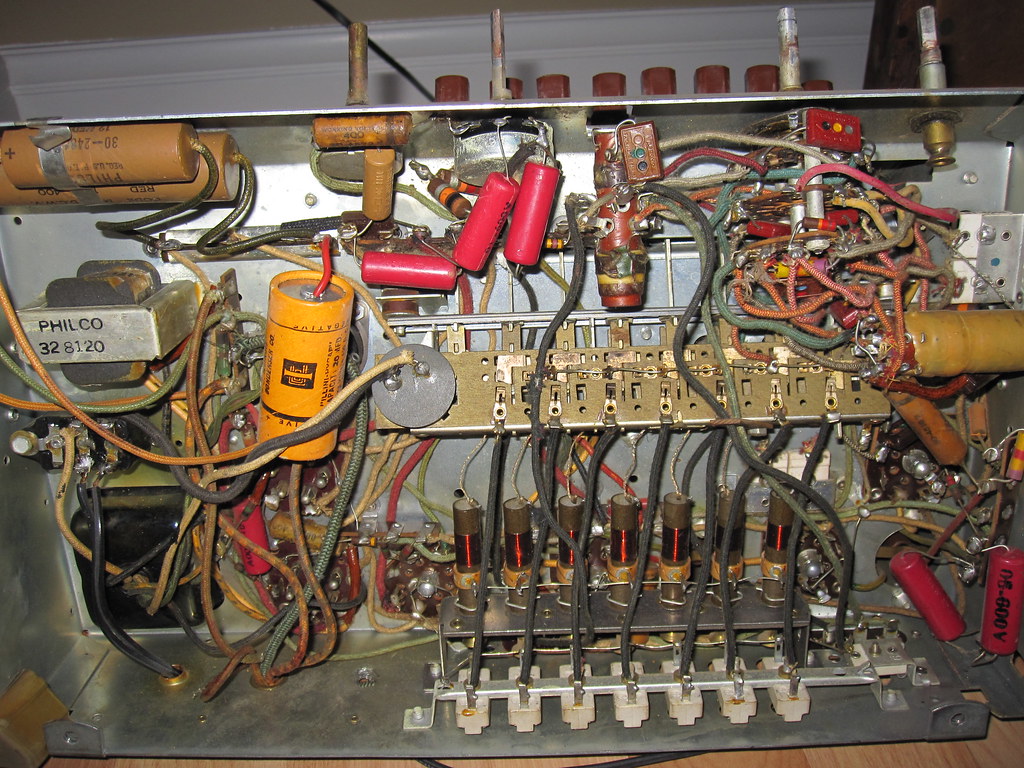LizzieMaine
Bartender
- Messages
- 33,076
- Location
- Where The Tourists Meet The Sea
chrismak said:Question is.. do I replace all the parts and wiring.. or no?
*First* you read one or more of the books cited above, and the website on replacing capacitors. Second, if you don't already have a volt-amp-ohm meter, you get one -- you'll need it.
Third, study the schematic, parts list, and chassis diagram. Identify every part you can see and match it with the parts list. Know what every part is and why it's there. Be absolutely sure that everything that's supposed to be there *is* there.
Then, and only then, should you start working on the set. The electrolytic capacitors will need to be replaced first. The other caps should follow, one at a time. After replacing each cap, check the radio and make sure you have it connected properly -- don't try to replace them all in one sitting, because if you make a mistake it'll be that much more difficult to find it.
Don't replace the resistors at this point, unless you see one that's obviously charred. Don't touch the coils. Don't twiddle any screwdriver adjustments -- they're set the way they are for a reason.
Inspect the wiring carefully -- it looks like most of your insulation is reasonably good, so you can leave it as is for now. If during work on the set you move a wire and insulation comes off, you can either replace that wire or cover it with heat-shrink tubing.
And once again, take your time. There's no rush. The radio I'm listening to right now sat in my garage for over twenty years before I finally got around to fixing it.
.///////,,,,,,,,,,,,,,,,,,,,,,,,,,,////
